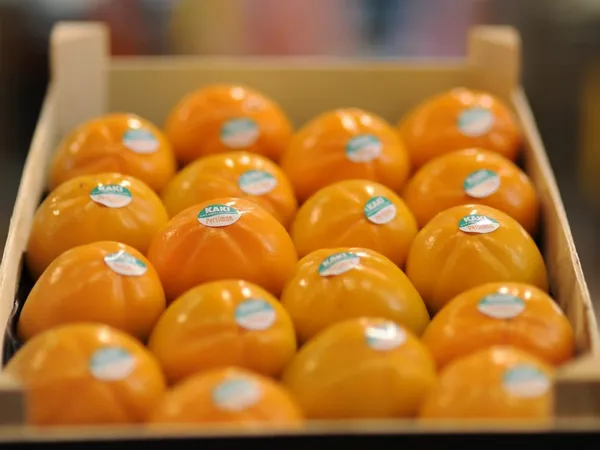PersiMon® growers in the Ribera del Xúquer valley near Valencia have been faced with volume challenges this year due to a field pest which has resulted in the damage of approximately 40% of this year’s PersiMon crop. It is expected that 80,000 tonnes will be marketed worldwide this season, a decrease from the volumes sold in recent years.
The Kaki de la Ribera regulatory council, which governs the fruit’s P.D.O. status, was expecting volumes to be similar to last year, when just over 4,000 tonnes of P.D.O. PersiMon were sold in the UK between October and January.
Rafael Perucho, head of the regulatory council, stated: “The damage to this year’s crop is a result of the challenges posed by this year’s unpredictable weather and a new pest which has attacked the PersiMon, both of which have affected fruit production. The various downpours of rain and hail, together with the prevalence of the pest citrus mealybug (Planococcus citri), mean that a significant part of the crop will, in the end, not be picked.

“Nevertheless, the PersiMon that does reach the marketplace will of course comply with the usual quality criteria as set by the P.D.O.”
PersiMon is the trademarked name for the P.D.O.-certified Spanish fruit, spelt with a single ‘m’, distinguishing it from other persimmon fruit. The P.D.O. status ensures it is the Rojo Brillante variety and has been grown in the Ribera del Xúquer valley region where it was first discovered, and also that the fruit comes from growers that have passed a series of checks on aspects including traceability and quality of the PersiMon they supply.
The aim of next year’s campaign will be to continue to create awareness amongst the UK consumers and trade about the quality and unique benefits of the PersiMon fruit. Perucho adds: “All in all, PersiMon is still a relatively unknown fruit in many markets, and so we are sure that over time, through investing in promotion and the work of the sector, we will be able to reach many more markets and consumers, as we are convinced that it is a fruit that still has some way to go.”
For more information:
www.spanishpersimon.co.uk
www.foodsfromspain.com
